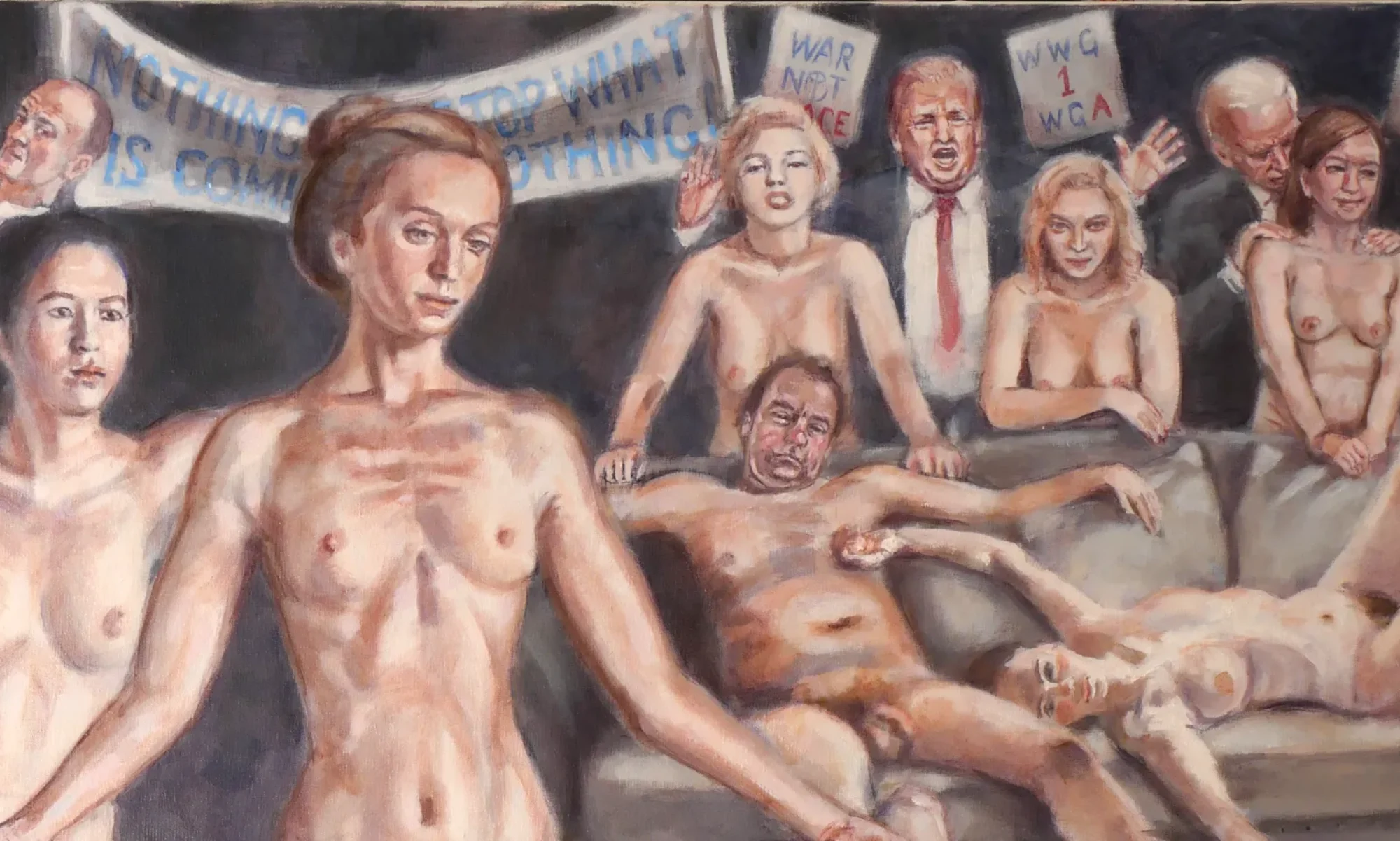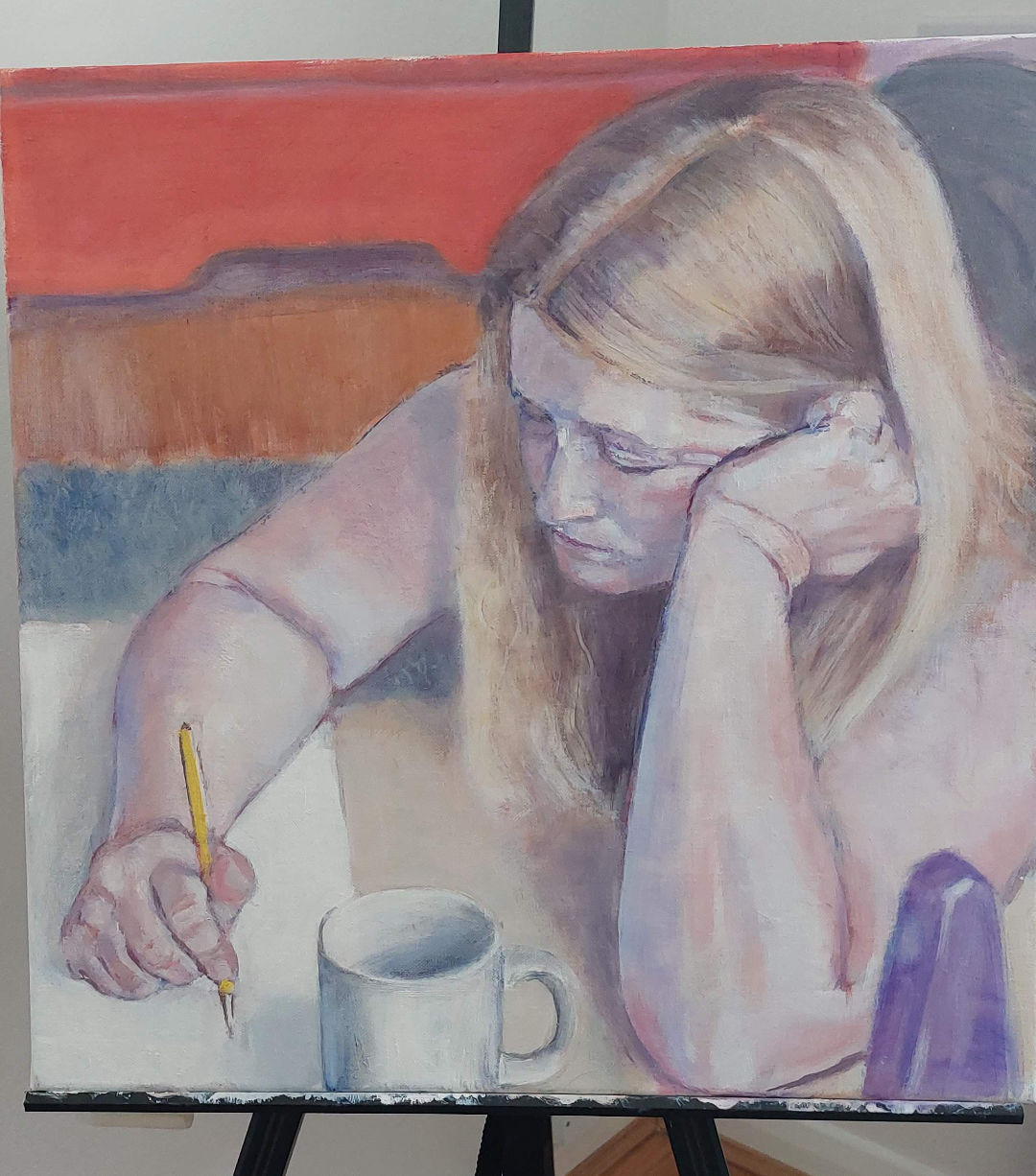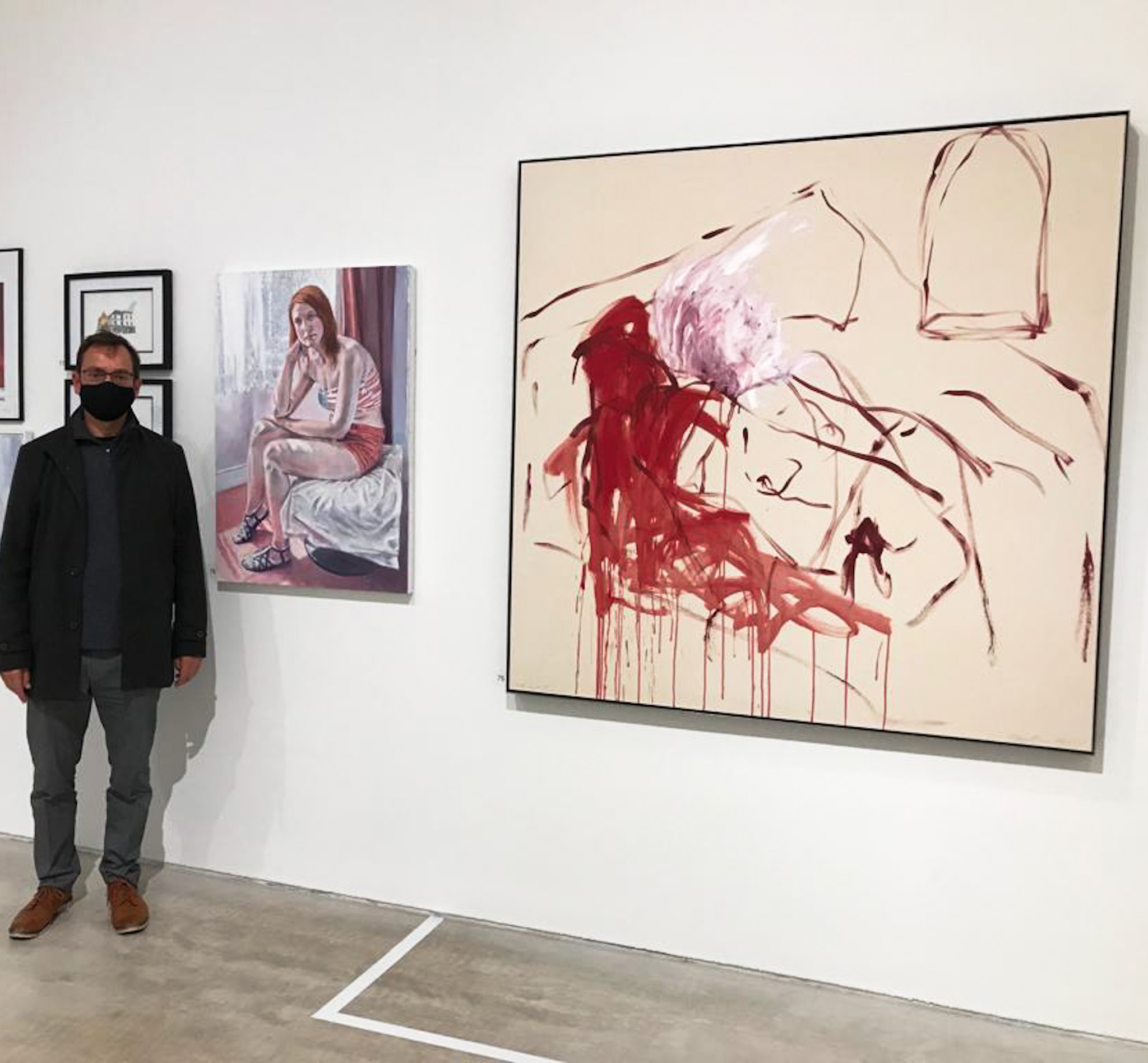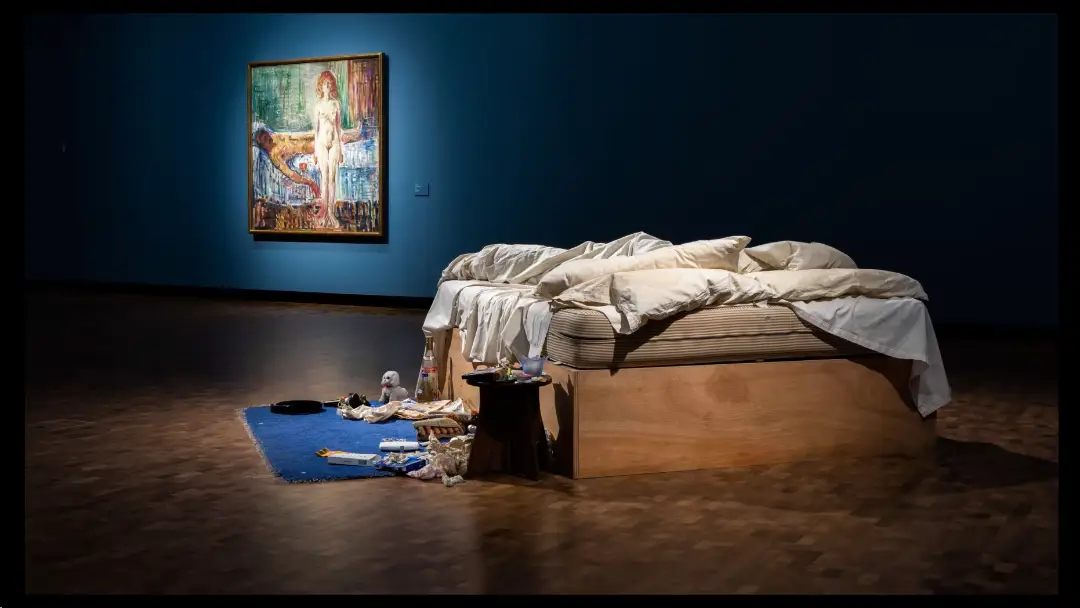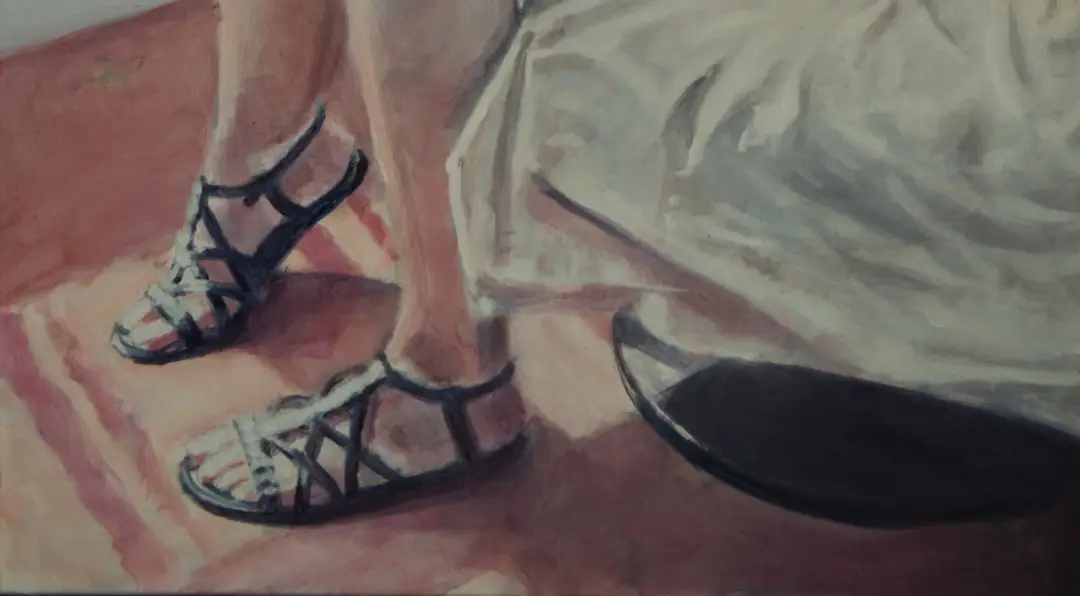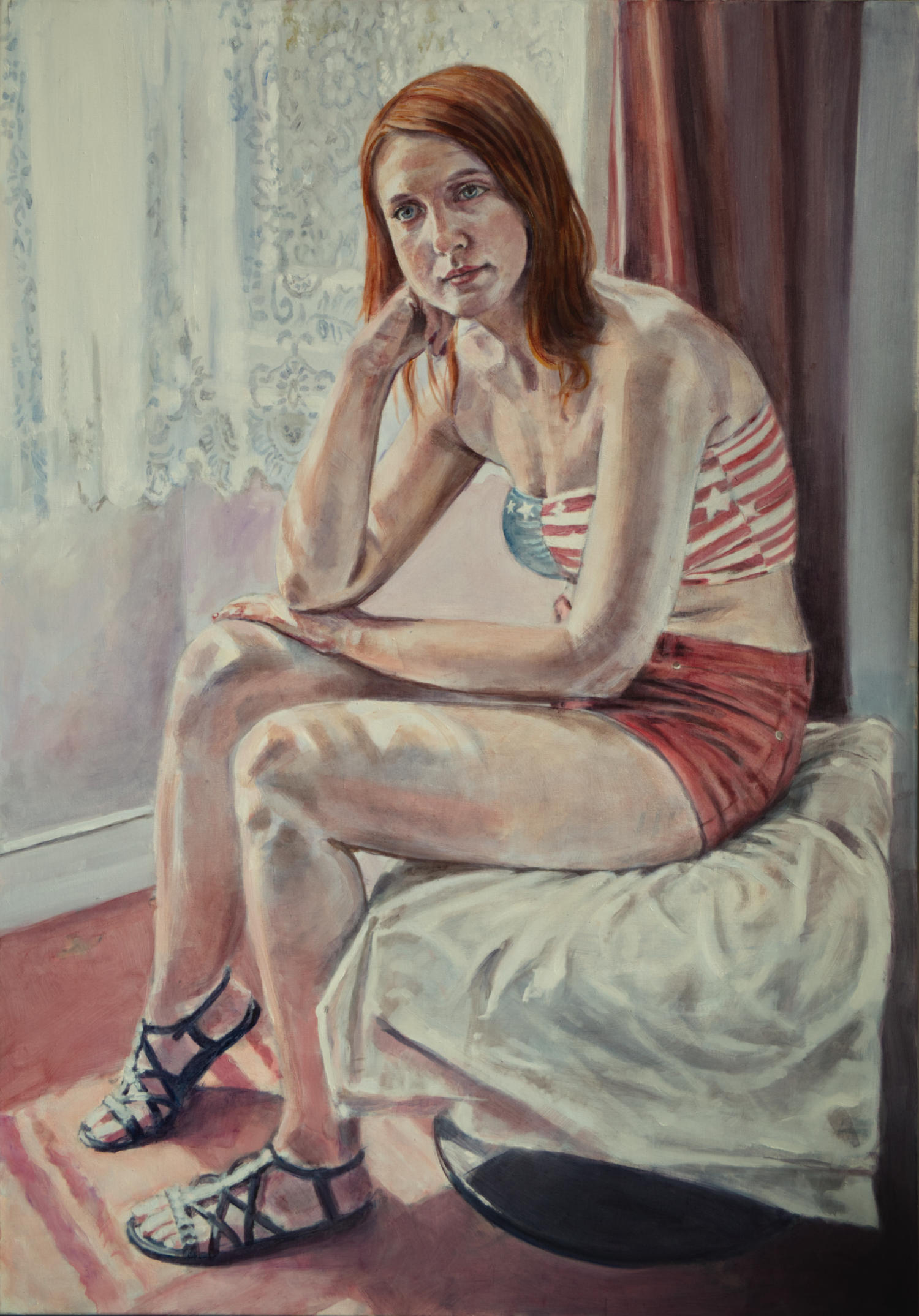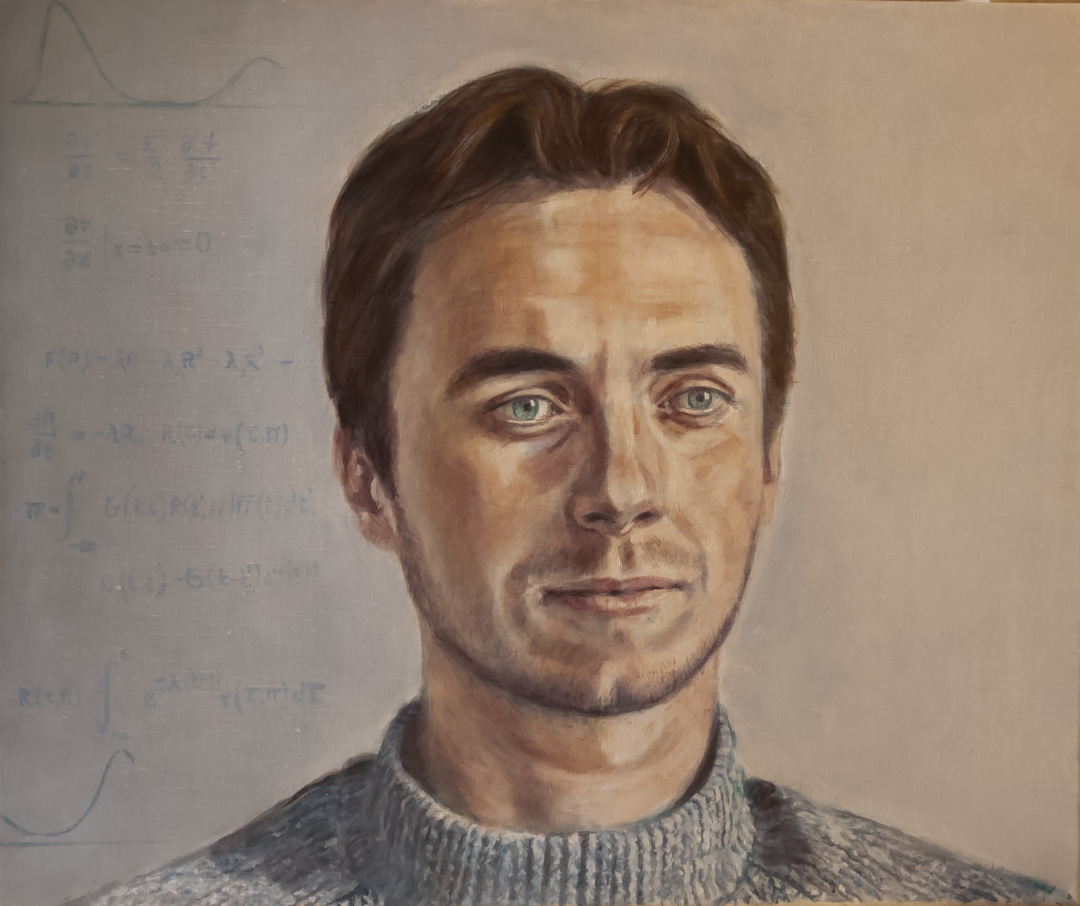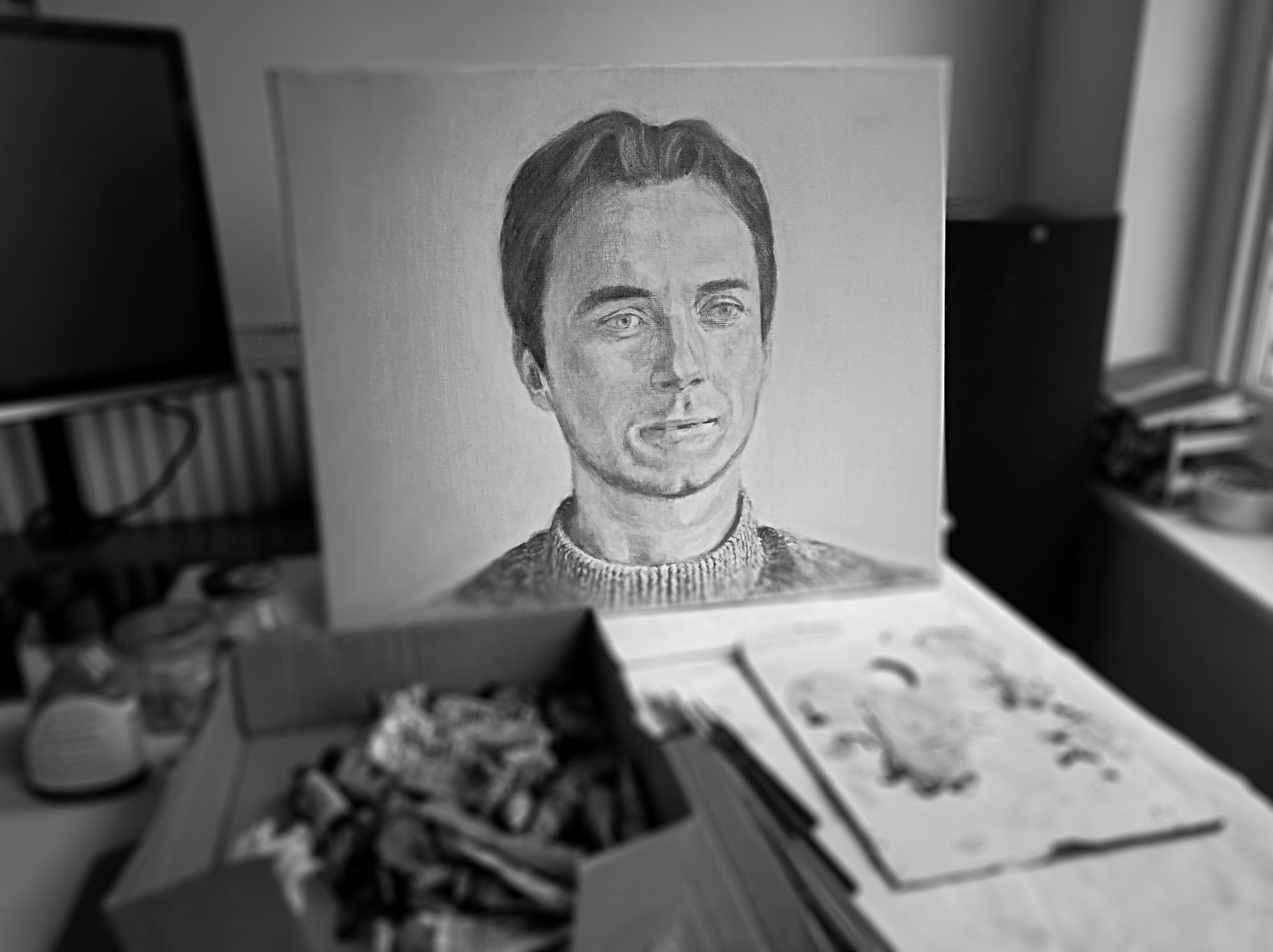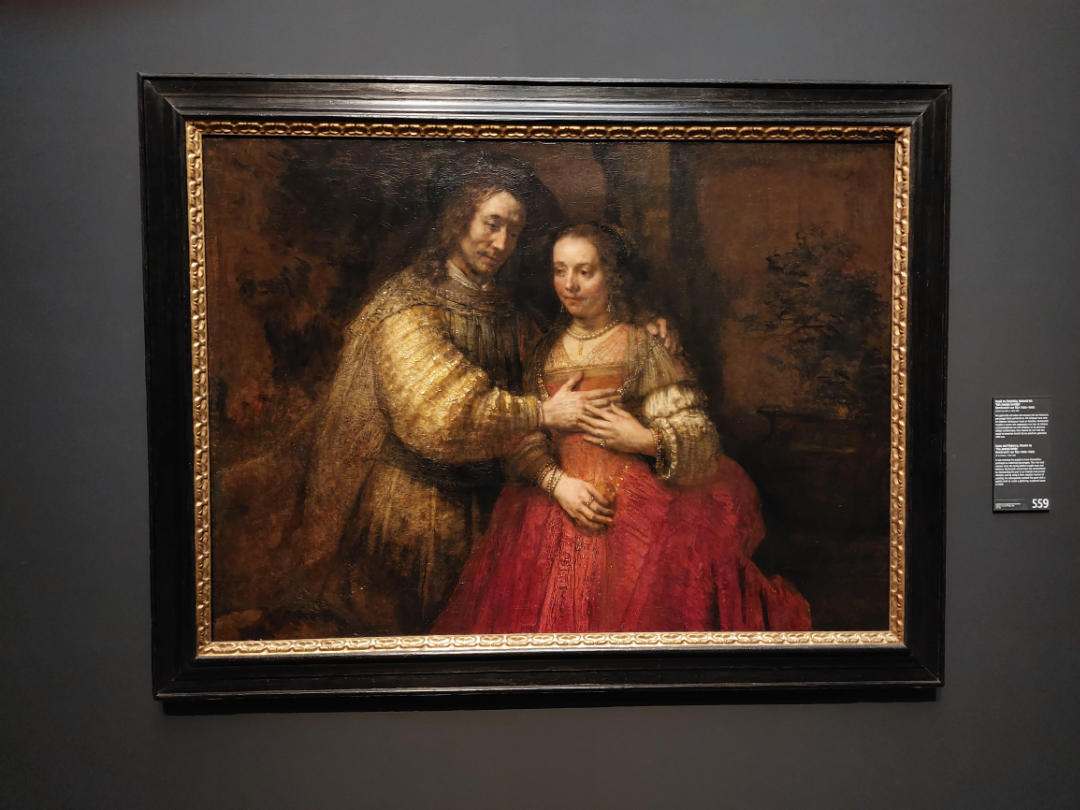
A recent visit to the Rijksmuseum in Amsterdam compelled me to rework an old painting. It was the Rembrandts that did it.
I painted my self-portrait “Halo” during a particularly difficult time in my life. I had become the carer for my terminally ill partner. People praised me for my fortitude, but I was aware of a disparity between how people saw me and how I truly felt. Deep down there was an awful darkness; a sense of despair. I tried to recreate this sense in a painting, but wasn’t completely successful.
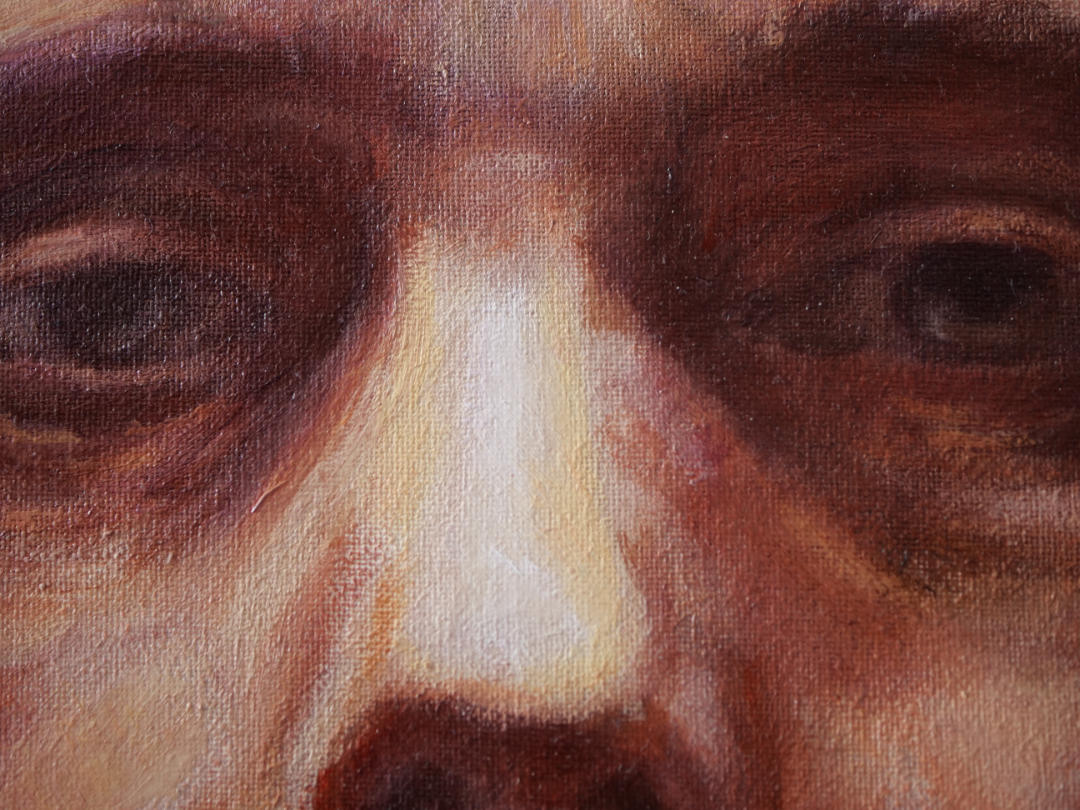
Anyway, fast forward to March this year, and I had a splendid time visiting Amsterdam and studying the Rembrandts at the Rijksmuseum. Although there’s a very good selection of Rembrandts to be seen in London, I was captivated by the examples in Amsterdam – some really fine late Rembrandts. I could stare at them for hours. I marvel at the detail he could suggest in the shadows, with such economy. And there was such a sadness in those eyes.
In looking at these wonderful paintings by the great master of portraiture, I felt a desire to revisit one of my earlier self-portraits: “Halo”.
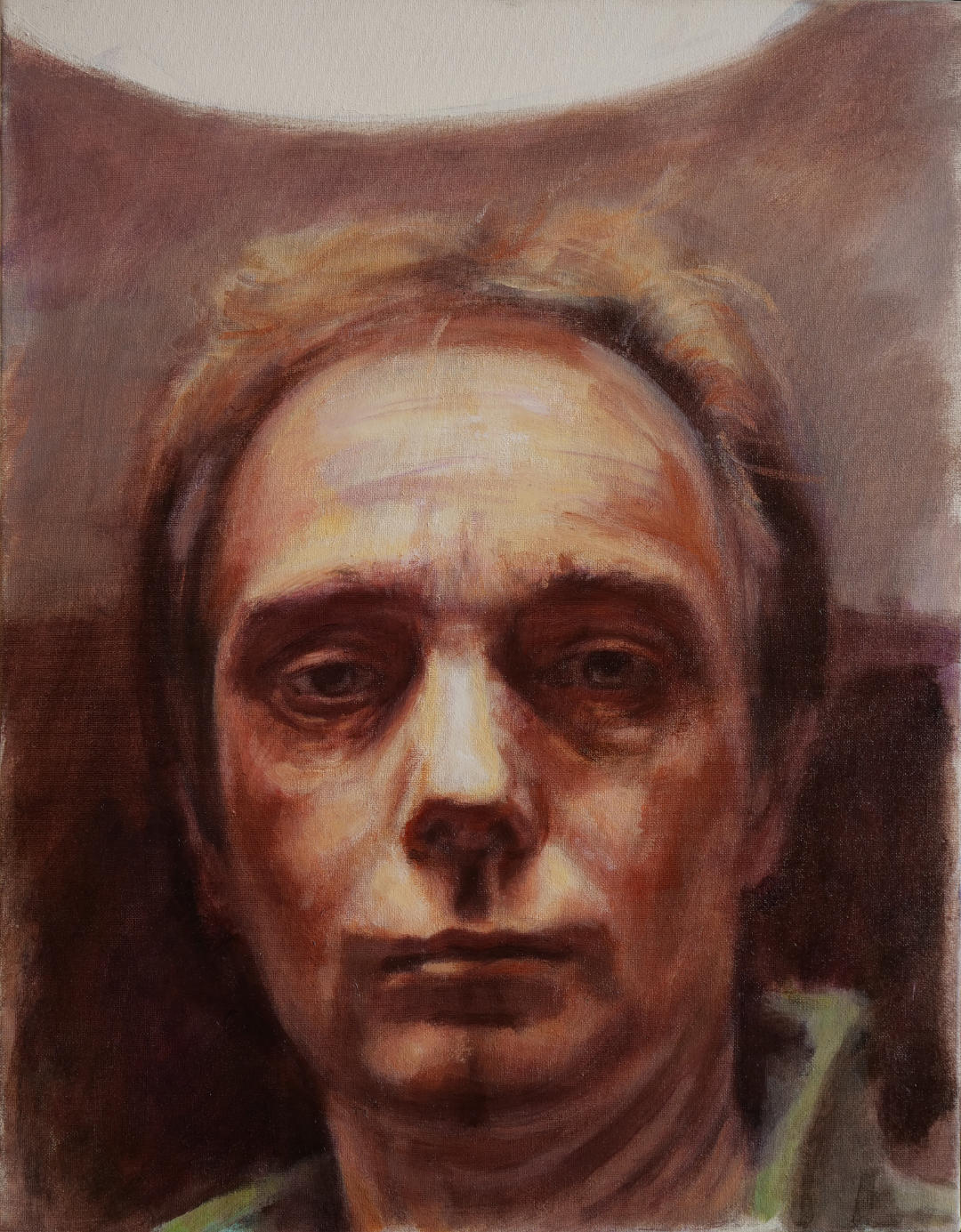
I didn’t undertake many changes. Basically I added a few more layers of glaze, but this time I was a bit looser in the application and removal. It is easy to fall into the trap of becoming too precious when applying glazes. It’s the final stage, and the underpainting might have taken many hours to complete, so there’s an obvious reluctance to mess it up with a sloppy final layers. But looking at those old Rembrandts, what struck me is the spontaneity of the most beautiful passages in his paintings. He wasn’t afraid of messing them up.
